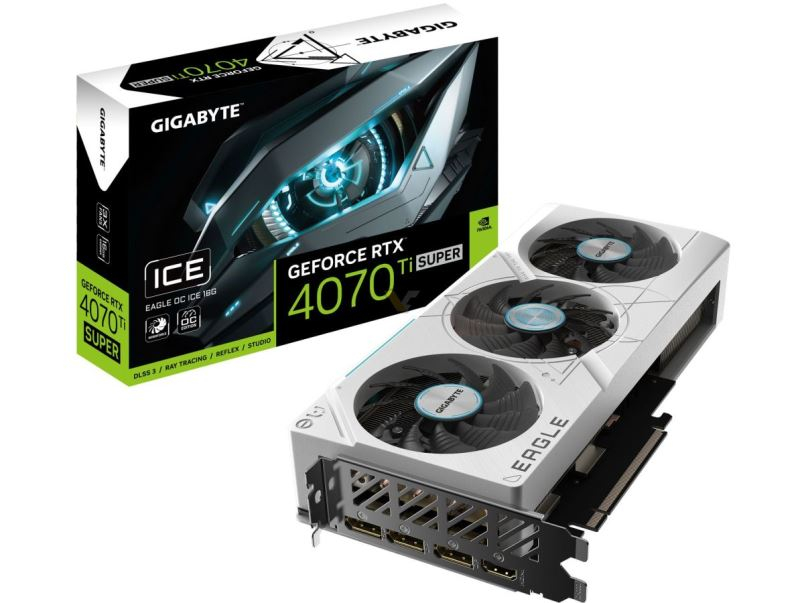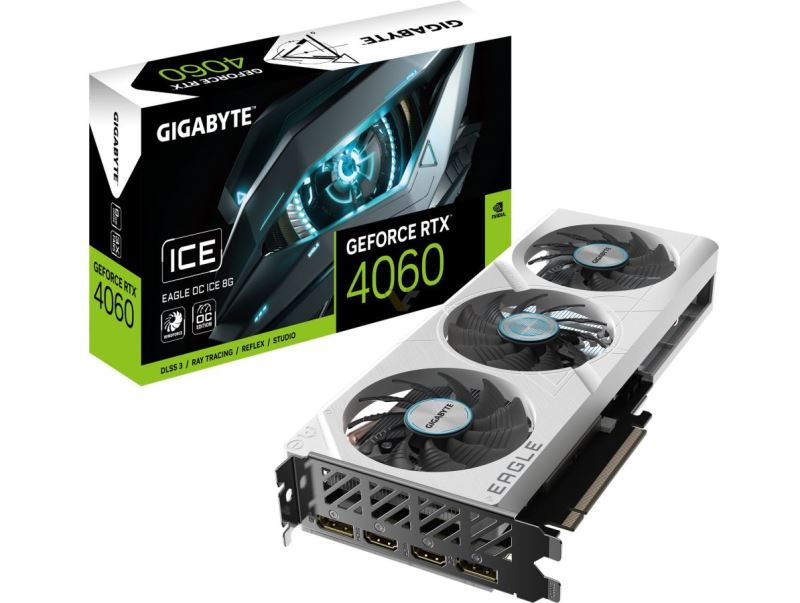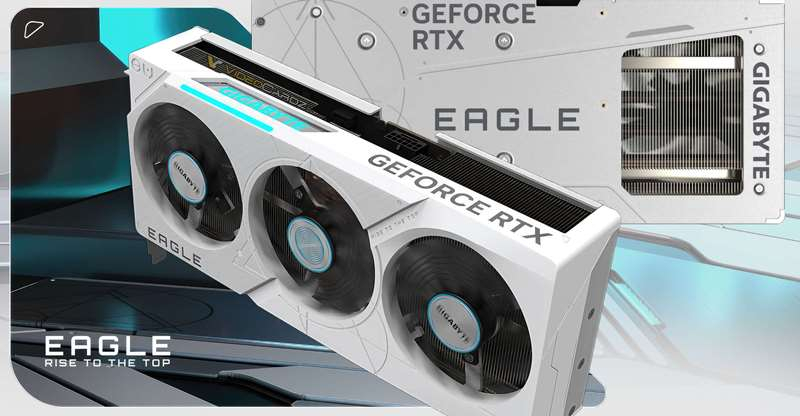Gigabyte officially unveils four new graphics cards, all belonging to the GeForce RTX 40 series with two to augment the Super line-up. Rumours surrounding these new accelerators have been circulating for some time, fuelled by various information leaks.
The Eagle Ice models, essentially, are upgraded versions of the Eagle accelerators, presented in a fresh white color scheme. One of the major highlights of the Eagle Ice graphic cards is their cooling system design that includes three fans and additional white rear panels.

The critical difference between the GeForce RTX 4060 and RTX 4070 Eagle Ice accelerators lies in their sizes, independent of their features. The RTX 4070 showcases a 2.5-slot design (50 mm) with a length of 26 cm, while the RTX 4060 comes with a 2-slot design and is 27 cm long.

Each of the Eagle Ice models features factory overclocking, akin to the original series. Gigabyte may potentially launch non-overclocked versions of these accelerators in the future. The introduced novelties include:
- GeForce RTX 4070 SUPER EAGLE OC ICE 16G GV-N407TSEAGLEOC ICE-16GD (frequency: 2640 MHz, reference model frequency: 2610 MHz),
- GeForce RTX 4070 SUPER EAGLE OC ICE 12G GV-N407SEAGLEOC ICE-12GD (frequency: 2535 MHz, reference model frequency: 2475 MHz),
- GeForce RTX 4060 Ti EAGLE OC ICE GV-N406TEAGLEOC ICE-8GD (frequency: 2550 MHz, reference model frequency: 2535 MHz),
- GeForce RTX 4060 EAGLE OC ICE 8G GV-N4060EAGLEOC ICE-8GD (frequency: 2505 MHz, reference model frequency: 2460 MHz).
The RTX 4060 Ti Eagle Ice accelerators boast unique monitor connection interfaces: two DisplayPort 1.4a connectors and two HDMI 2.1a connectors. In contrast, the RTX 4070 Ti Super is equipped with three DisplayPort connectors and a single HDMI. Speaking of power connectors, the RTX 4060 uses a standard 8-pin PCIe connector, whilst the RTX 4070 Ti Super will require a 16-pin power cable or an adapter.
Though Gigabyte has not yet announced the pricing for the newly presented Eagle Ice graphic cards, it’s likely to match the price of the Eagle accelerators given they are essentially the same graphics card but in a different design.





